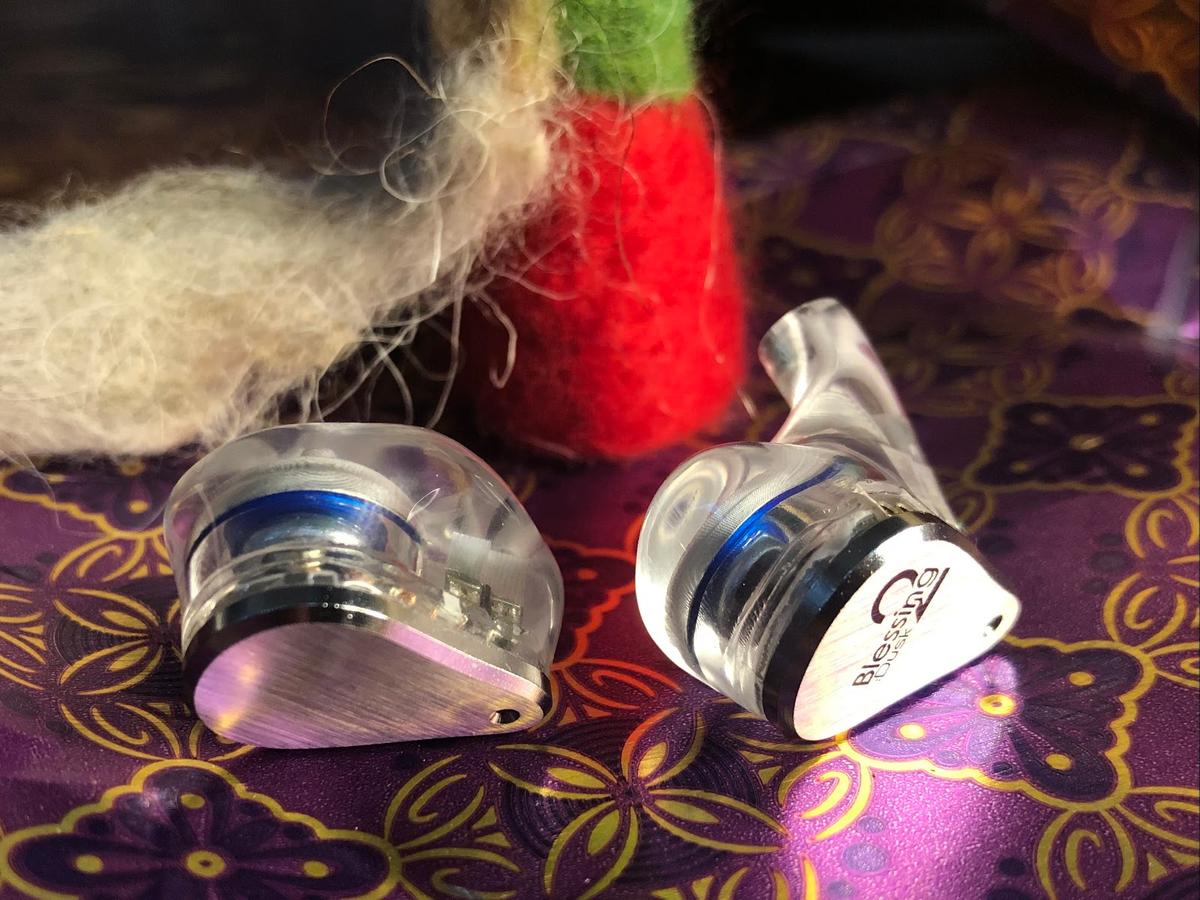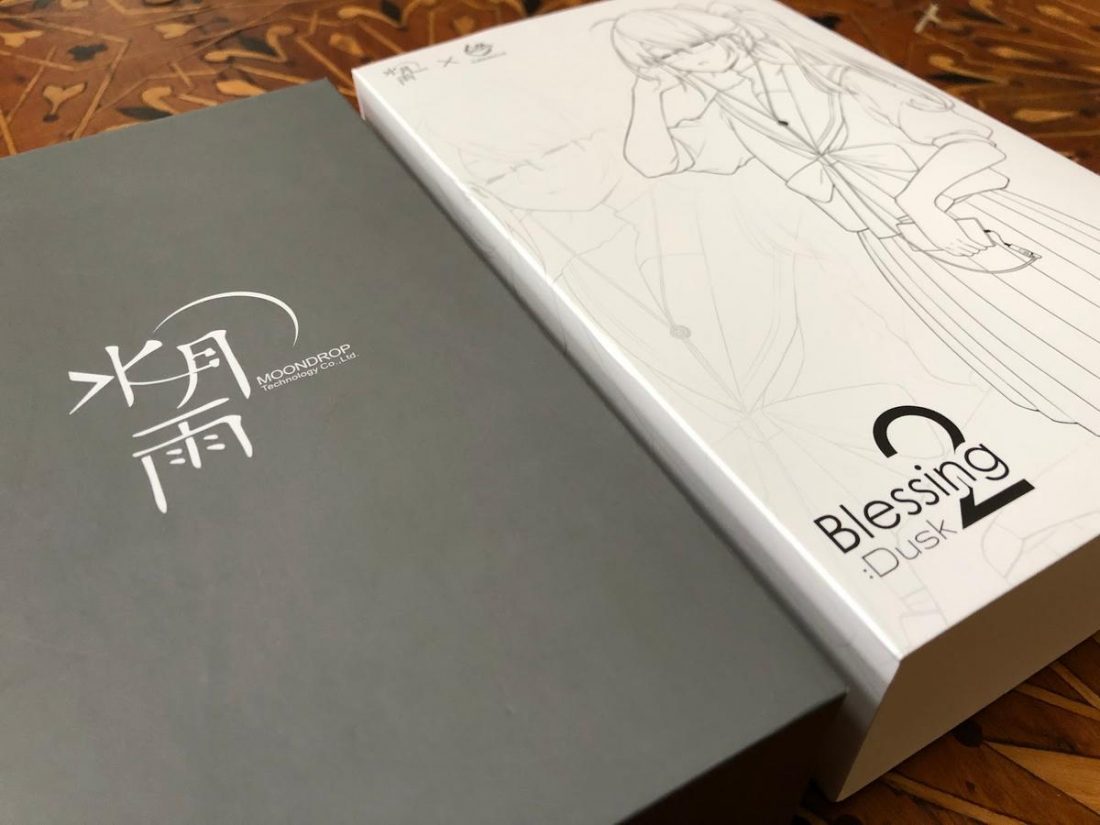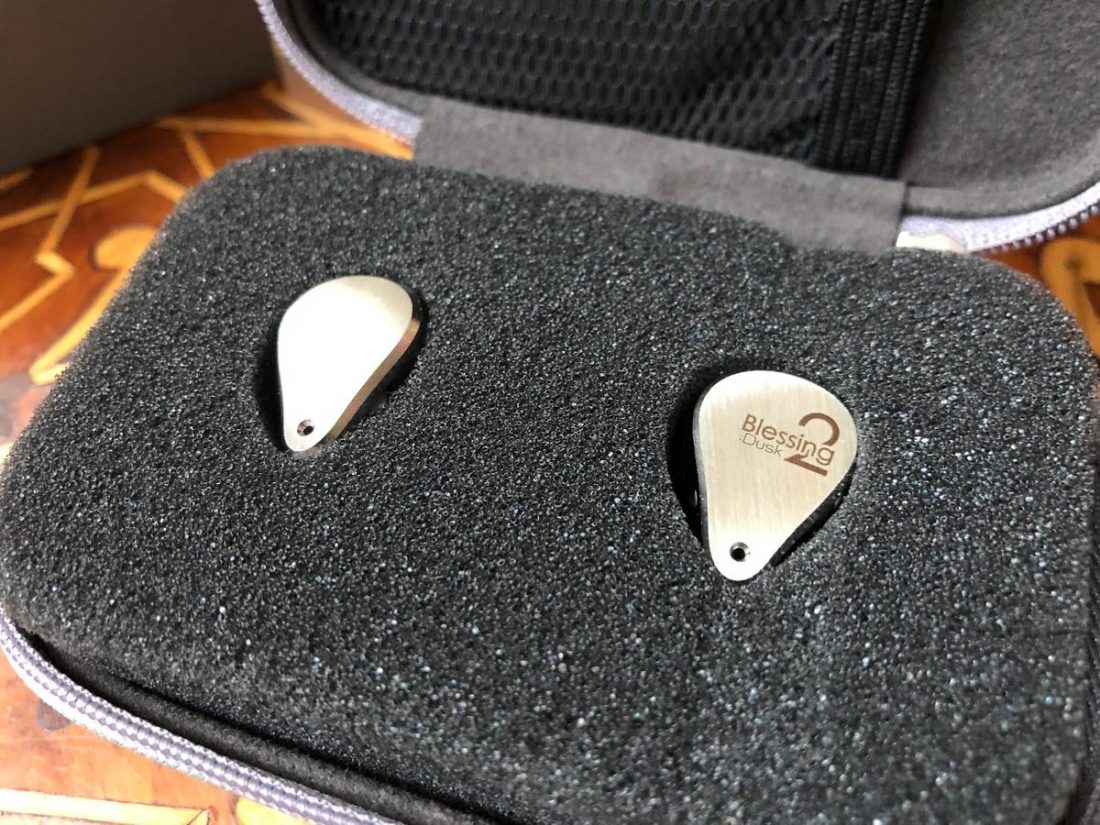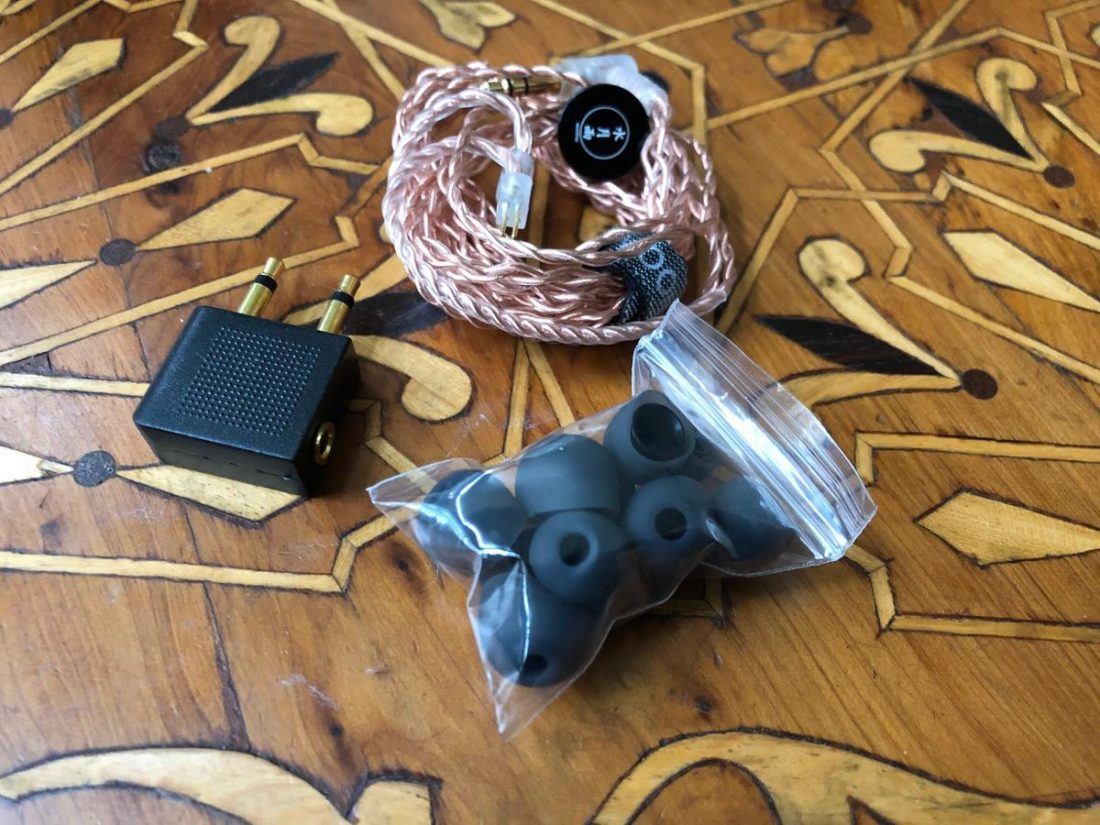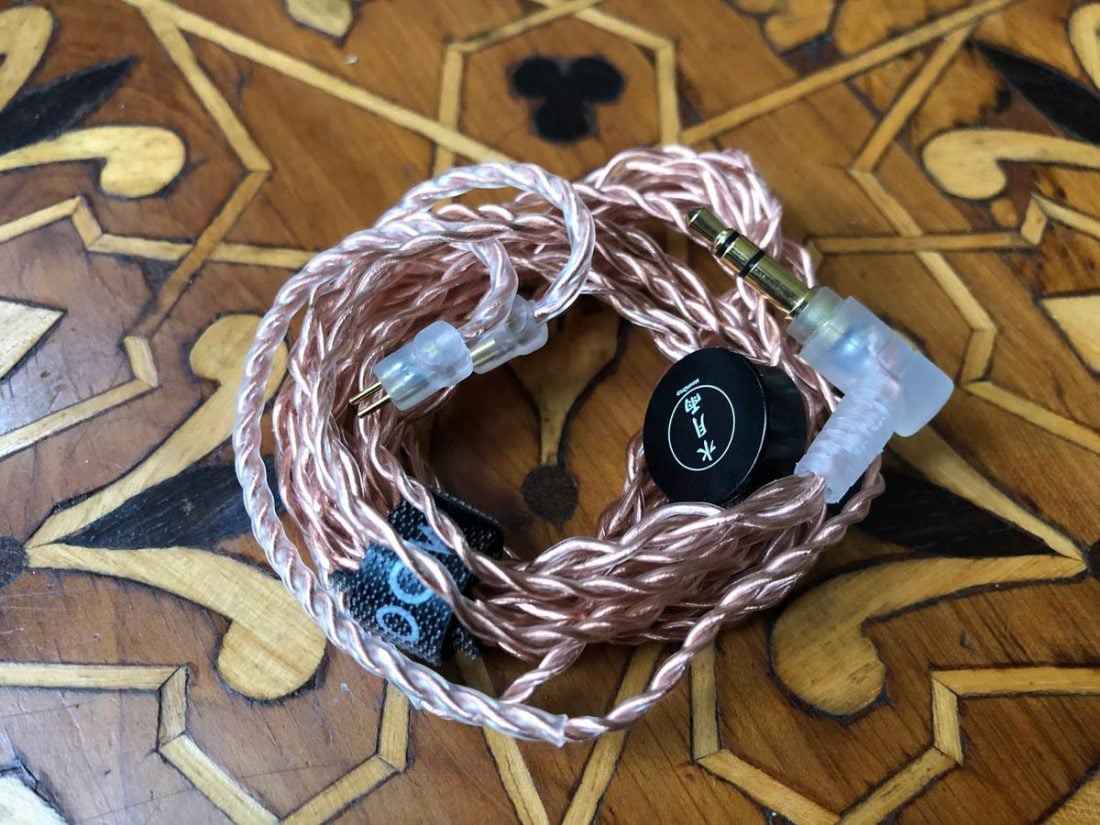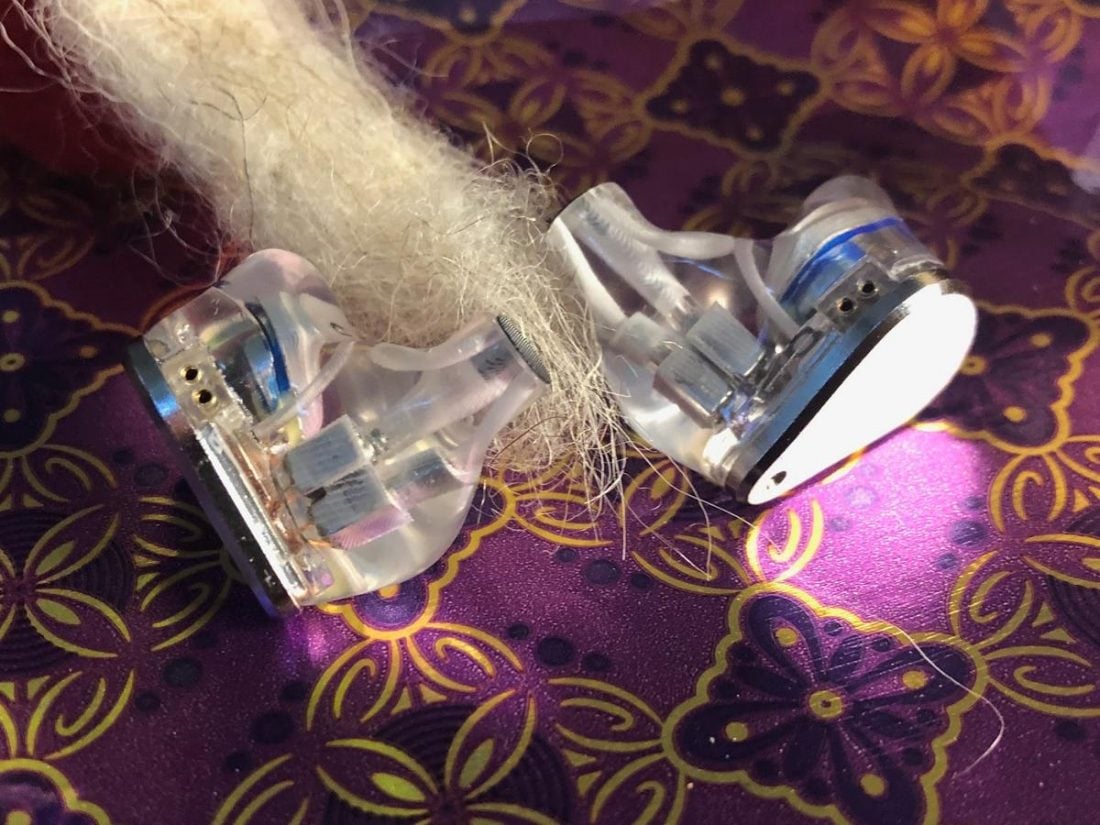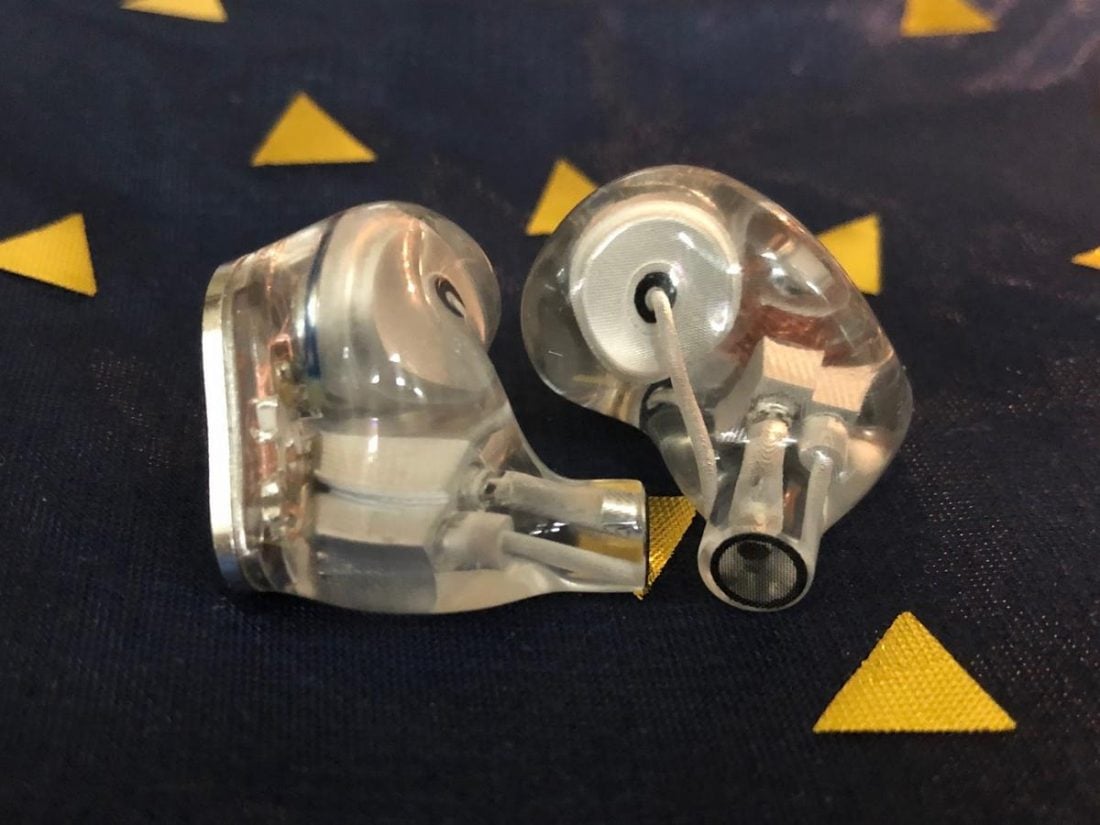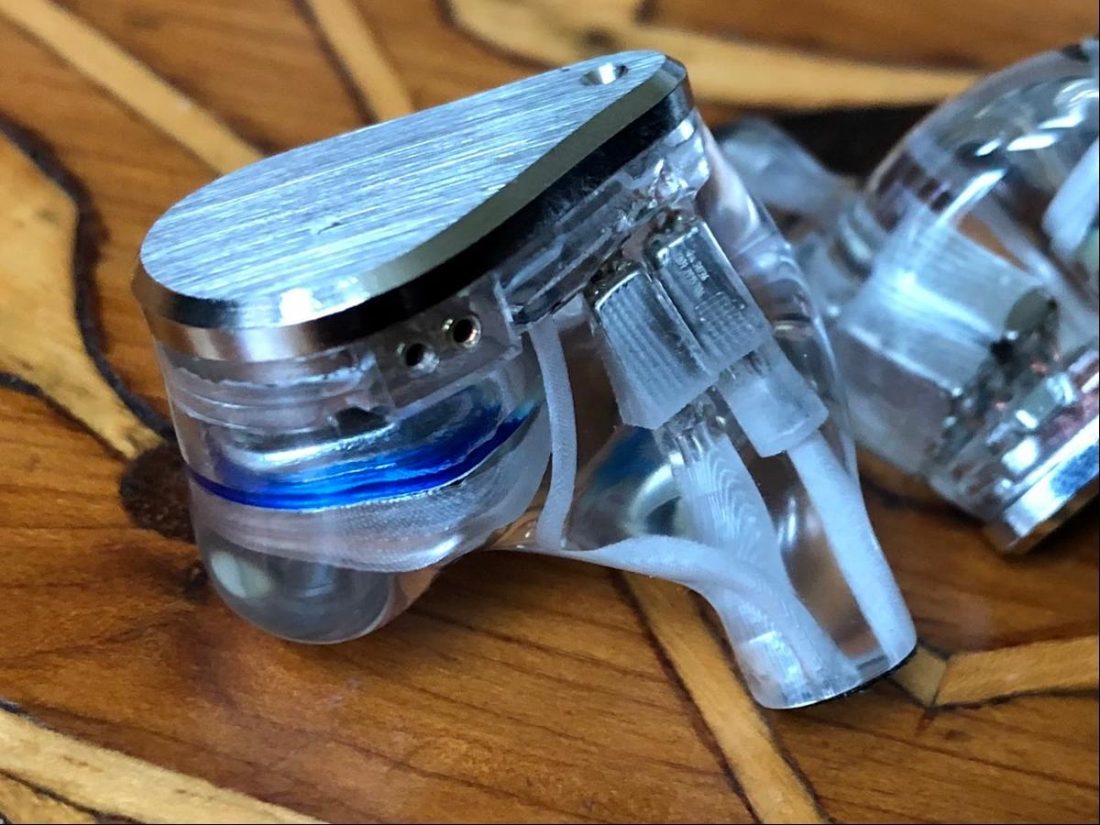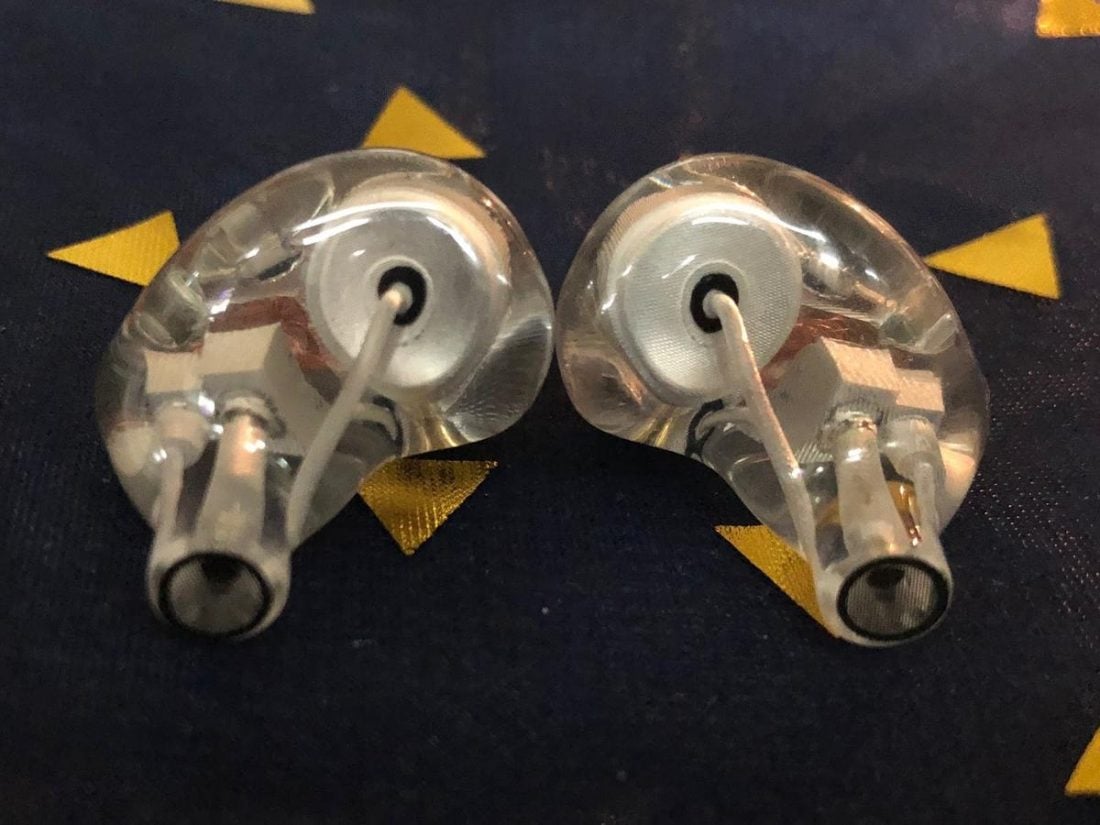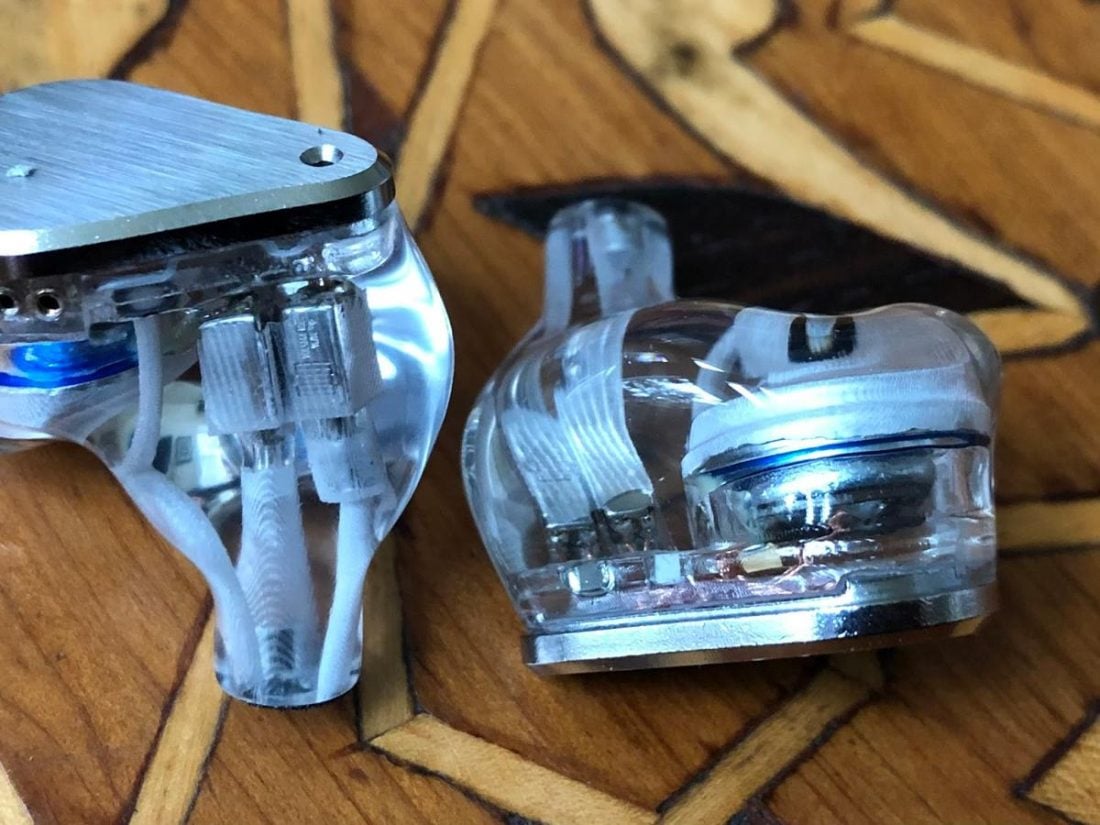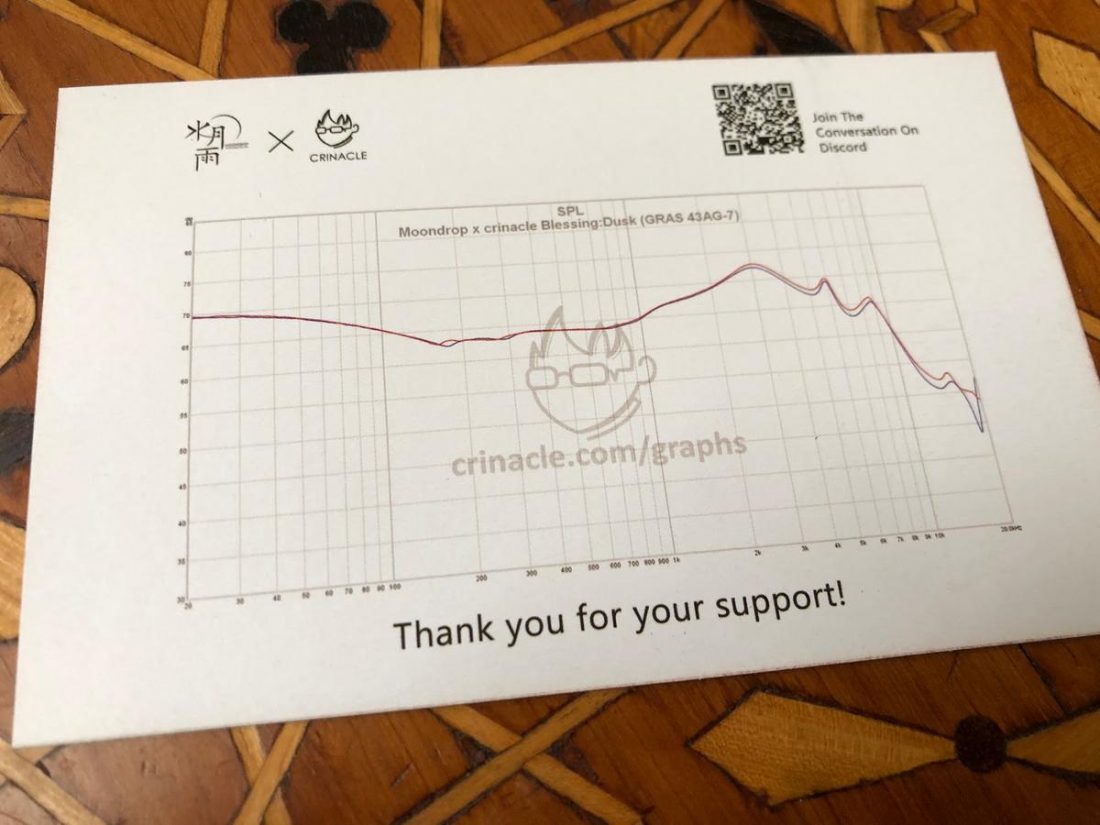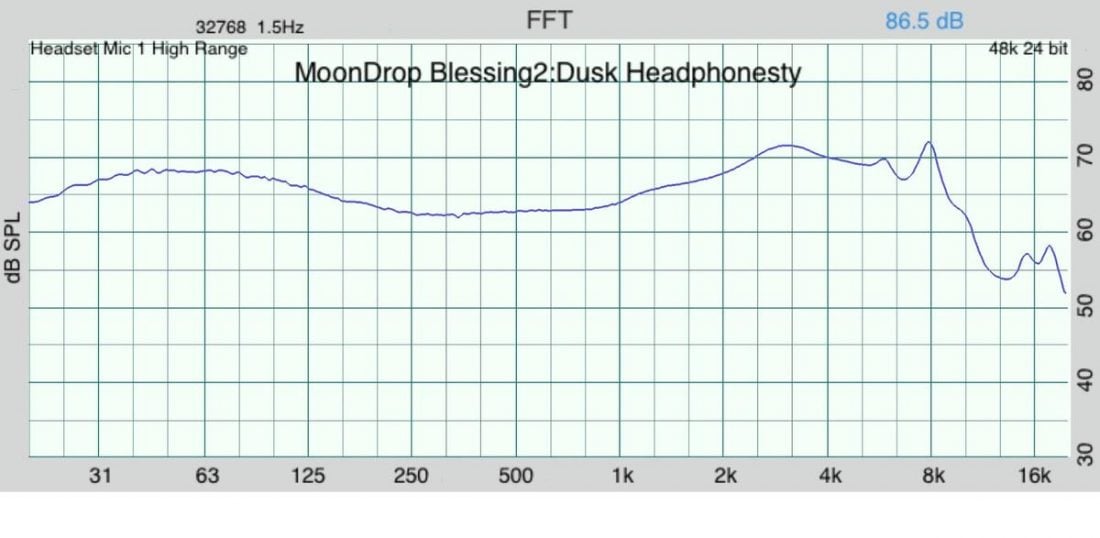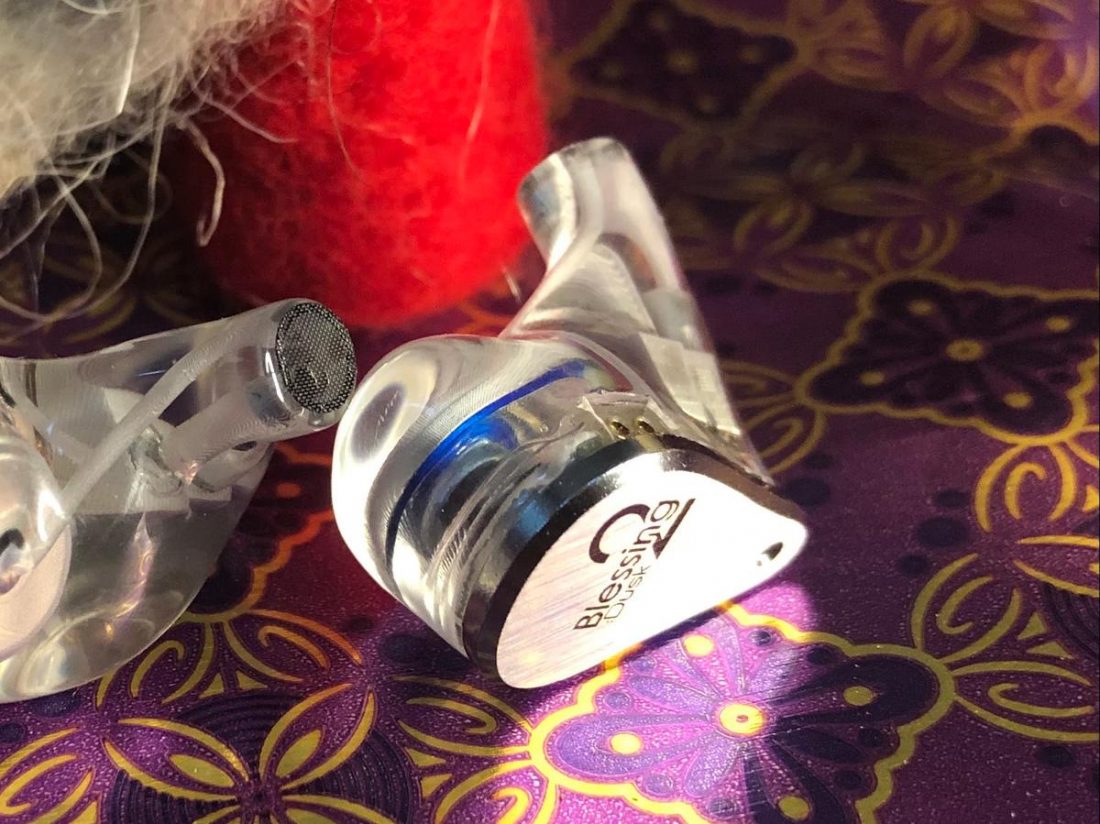MoonDrop has made its name as a Chinese IEM manufacturer that offers excellent sound and high-end build quality for a reasonable price. About a year ago, they released the low-cost Starfield to much acclaim and set a new standard of performance at the USD $100 price point. Additionally, they’ve released several other well-regarded models, including the SSR, SSP, Kanas Pro, and Blessing. The original Blessing was soon replaced by the Blessing 2 (four balanced armatures plus one dynamic driver per hybrid IEM side), which received fairly universal praise. Today we’ll be looking at a new revision of the Blessing 2, the Blessing2:Dusk. The Dusk are produced by MoonDrop in collaboration with the IEM measurement, graphing, and review guru, Crinacle (actual name Corin Ako), and are tuned to his specifications. The Blessing 2 and the Blessing2:Dusk are currently available for purchase, with the retuned Dusk costing only $10 more than the standard Blessing2 (USD $330 vs. $320). If you would like the anime girl featured on the box engraved on the left IEM faceplate, this option is available for an additional $30. Although, I’m assuming she doesn’t make things sound any different. So how do the Blessing 2 and the Dusk differ? Crinacle states that he set out to address his personal preferences with some subtle changes to the Blessing 2’s tuning. The Dusk is intended to present as more neutral and less midrange forward, with a bit more punch in the overall sound. Crinacle considers the Blessing 2 to set the standard for tonality at their price point. So, with a simple re-tuning of these already excellent IEMs, he is offering enthusiasts the opportunity to experience his definition of how IEMs should sound. The midrange is almost where I’d be perfectly content with it. If I had the choice I’d probably kill the 3kHz response by just 2, maybe 3dB (that whole “a little too shouty” thing that I’ve mentioned before)… Basically, the Blessing2:Dusk addresses most of my taste-related complaints of the Blessing 2, namely the slightly forward upper midrange and kind of bass emphasis that I like. It’s not like the Dusk is a completely different IEM from the Blessing 2, after all I already consider the tonality of the Blessing 2 to be pretty much “all there” and so awarded it with the “S” grade in tonality. Just some minor changes here and there to “improve” what is already a great IEM.” – Crinacle Are they cheapo, flavor-of-the-day, bargains? Certainly not. But is it possible that we can experience near end-game performance at a fraction of TOTL prices? Crinacle seems to think so. Let’s find out if I feel the same.
MoonDrop Overview
MoonDrop Co., located in Chengdu, Sichuan province, China, was formally established as a company in 2015 by a group of audio enthusiasts. They first launched entry-level products, such as the VX earbuds, until 2017, when they released their first high-end model entitled the Liebesleid. It was with their move to IEM production that MoonDrop gained international acclaim and has grown into “a mainland brand with independent R&D and manufacturing system, advanced R&D equipment and theoretical system, complete supply system and operation framework.” MoonDrop focuses on investment in research and development and is committed to exploring “the application of new technologies, new materials and processes in products.” They use a variety of materials including metals and resin in the creation of their IEMs and earbuds.
Technical Specifications
Name: Blessing2:Dusk Brand: MoonDrop Price: $330 Form: IEMs Dynamic Driver: 1 Balanced Armature: 4 (Treble unit: Knowles SWFK, Midrange unit: Softears D-MID-A) Driver Size (mm): 10mm paper cone diaphragm coil Impedance (Ohm): 22 Ω @ 1kHz (± 15%) Sensitivity (dB): 117dB / Vrms @ 1kHz Min. Frequency Response (Hz): 20Hz Max. Frequency Response (kHz): 20kHz Removable Cable: Y Source Jack: 3.5mm TRS Cup / Shell Jack: 0.78mm 2-pin Mic: N IPX: N/A
Packaging
The Blessing2:Dusk comes in an attractive (albeit somewhat embarrassing for middle-aged men) white cardboard sleeve featuring a prominent, anime-style waifu girl. The interior box is dark grey and lifts off to display a color picture of the girl. Underneath is a small black box of accessories and a grey zipper storage case containing the IEMs securely nestled in foam. Fittingly, also included inside the box are Crinacle’s frequency measurement graphs.
In the box
MoonDrop Blessing2:Dusk IEMs Rectangular grey zipper hard case 4-strand, 6N OFC, copper-colored, Litz braided cable with 3.5mm TRS to 2-pin 0.78mm connectors ( ±125cm) 6 pairs of grey silicone ear tips (S, M, L) 3.5mm TRS to dual 3.5mm TS airline adapter MoonDrop logoed Velcro strap for the cable Card
Additionally (not in the box), a bag containing tweezers and several replacement adhesive mesh dust-covers for the nozzles are included. Crinacle assures me that the mesh is just for protection, and no changes in sound are expected with it in place. The included accessories are sufficient, if not exceptionally generous. I do quite like the classy grey case, with its mesh interior pocket, rigid sides, and outer fabric-texture feel. The included airline adapter seems a bit ironic in 2020, and although it’s been quite some time since I’ve seen one, I received two of them in the same week bundled with review IEMs. Perhaps the IEM industry merely is optimistic about renewed air travel at a near-future date.
Cable
IEM cables are virtually jewelry these days, featuring precious metals, intricate braids, and attractive colors. And just like jewelry, personal preference for the design and aesthetics counts for a lot. The included cable is undeniably an attractive copper color and is well braided and supple. It features the same small black y-split round bead and clear rubber connectors as the Starfield cable. It’s remarkably similar to the (less expensive) Starfield cable (which I don’t love), albeit just slightly thicker. For me, the Dusk cable design is far from my favorite. I prefer a thicker 8-strand cable over an ultra-thin 4-strand cable like the one included with the Dusk. It’s also missing a chin slider. It just isn’t a particularly premium feeling cable. Of course, it works and sounds fine, and your personal cable preferences likely differ from my own. It’s the same 6N OFC cable included with the MoonDrop S8, and on the positive side, it is light in weight, evenly braided, and non-microphonic.
Design
The Dusk aren’t following the same trend towards sparkly bits, wood grain, or Day-Glo colors in faceplates that seem to adorn many IEMs these days. While the overall design of the Dusk is quite simple and utilitarian, the build quality is excellent. Plain, medical-grade, brushed stainless-steel faceplates are married seamlessly to transparent resin bodies. The right faceplate has the MoonDrop Blessing2:Dusk logo engraved on it, and for those so inclined, the mascot girl can be engraved on the left faceplate (for an additional $30).
Comfort
The Dusk are physically much larger than their Starfield sibling; however, they only weigh in at 9 grams (with ear tip) compared to 11 grams for each metal-bodied Starfield. Overall, this is a beefy sized IEM of moderately high weight, so those with smallish-sized ears may find it challenging to achieve a comfortable fit. So we cooperate with the well-known 3D printing supplier “Heygears Technology” to apply its mature high-precision DLP-3D printing technology and use imported medical-grade UV resin to produce high precision, high transparency, high hardness, and accurate complex cavity. – MoonDrop My medium-sized ears have no difficulty fitting the Dusk, and I find them ergonomic and comfortable for extending listening sessions. Not quite the perfect fit I have with the Mangird Tea, but overall quite acceptable. The Dusk shells are sealed, and the nozzles are relatively long, so exterior sound isolation is quite good. However, I typically don’t love resin-nozzle, non-lipped IEMs as I find ear tips will occasionally come off in my ears upon removal.
Internals
The MoonDrop Blessing2:Dusk are a single dynamic driver plus four balanced armature hybrid-configuration (per side). They employ physical band-pass and low-pass filtering using the 3D printed duct structure to divide the reproduced frequencies into three parts. Dual Knowles high-frequency balanced armature units reproduce treble frequencies. A pair of custom dual Softears balanced armatures are used for midrange frequency reproduction (between 500-8000 Hz). A 10mm dynamic driver, with a paper composite cone, is tasked with the low bass duties.
Blessing2:Dusk Sound
The bulk of my listening with the Dusk was done with a Hidizs AP80 Pro serving as the source for a Chord Mojo. File format and music style varied, but I did most of my listening in the relatively quiet confines of my home. The Dusk are quite efficient (117dB) with a relatively low impedance (22 Ohms), so most portable devices should be able to drive them reasonably well, although they do seem to blossom with extra amplifier power behind them. The original Blessing 2 was tuned to achieve MoonDrop’s altered Harman Target Response Curve, or as they call it, the VDSF Target Response. The VDSF (Virtual Diffuse Sound Field) is what MoonDrop feels is the most pleasing (or theoretically ideal) sound signature, and they tune their products to follow this curve closely. In brief, VDSF gives a slight lift in the bass with some ups and downs in mid and higher frequencies. So, what on earth is Crinacle trying to accomplish by messing with this secret sauce? Now that’s the question. A wide range of listeners appreciate the Harman or VDSF curves, but does that mean these tunings will perfectly match everyone’s tastes? Of course not. Otherwise, all headphones and IEMs would use a magic curve, and everything would sound virtually the same. Crinacle describes his “own personal target curve [as] having less 3k and more subbass.” The changes he has made to the Dusk reflect these preferences. The strengths of the original Blessing 2 are overall neutrality and above-average technical abilities (imaging, spatial positioning, texture, and separation). While generally applauded, some find their sound signature sharp and slightly thin, lacking deep bass impact. To be fair, I’ve not heard the original Blessing 2, so I can’t comment directly on a comparison between the two (although obviously, they will share more similarities than differences). However, I am happy to say that (to my ears) the Dusk sound as Crinacle intended. The Dusk are incredibly natural-sounding but not unengaging or boring (as some IEMs and headphones praised for their neutrality can come across). There’s plenty of low-end foundation to the music, with no apparent frequencies missing or improperly boosted. Just smooth and organic music reproduction across the board. Lief Vollebekk’s haunting vocals on his 2017 album Twin Solitude are delivered with realistic and textured weight. When the bass guitar accompanies his stripped-down sound, it thrums with a visceral presence. (I think) I like the Dusk best with this sort of (forgive me) dusky sounding music. Warm, comfortable, smooth, and beautiful. The Dusk are not narrow, ‘center-of-the-head,’ sounding IEMs. Instead, they give a more open-headphone-like experience with the music appearing to stretch significantly around you. There is no wall of sound impression. Instruments and vocals are delivered distinctly and separately.
Bass
Yes, Crinacle tuned the Dusk with a boosted low-end for added weight and depth to the music. In his words, a “roughly 6dB emphasis is the sweet spot for the bass to be “safe” for most listeners.” Note the words “safe for most”. Is the Dusk a basshead’s dream? No? Maybe? It’s got plenty of low-end presence for me. It’s all about balance with the Dusk. That low-frequency boost solidifies the sound, but the Dusk does not compromise on control. Bass is delivered with precision and detail. It’s not a muddy nor thumpy mess; the Dusk are all about musicality.
Midrange
The emphasis on lower bass frequencies in no way colors the midrange. The Dusk’s midrange is rich and oh-so-sweet sounding. Voices are realistically reproduced and remain quite forward in the mix, retaining clarity and presence that do not get bogged down by complex or busy musical passages. I’m not picking up any upper midrange shoutiness from the Dusk, which is a fairly common complaint with the original Blessing 2. I’m relatively sensitive to peaks in that range. Generally, I find the resultant nasal or shouting tonality turns me off longer listening sessions with headphones and IEMs that exhibit this trait. Vocals and instruments are clear and present. The Dusk are very resolving, and everything sounds realistic and well defined. Yet they remain enjoyable and non fatiguing for extending listening. Impressive indeed.
Treble
The treble response is smooth without noticeable peaks or dips. There is sufficient high-end response to yield the impression of fine detail, but not enough to stray over into the land of sharpness or sibilance. Crinacle set out to reduce that 3kHz peak that can cause IEMs to sound crisp but sharp, and it appears that he realized this intent. Unique sounds are well defined, without smear nor veil, and things sound like they should. The Dusk’s treble appeals to my listening tastes. Warm and relaxed sound signatures typically draw me in. I prefer to enjoy my music rather than critique it, and the Dusk delivers plenty of transparency and airiness for my needs. I appreciate that they convey this clarity with subtlety and a light touch. The higher frequencies don’t poke you in the ears. Instead, they merge smoothly with the midrange to deliver a highly immersive and emotional listening experience. The Dusk are a comfortable pair of IEMs to listen to; easy to like and easy to get lost within.
Comparisons
The best comparative IEMs I have on hand (at roughly the same price point) are the Thieaudio Legacy 5 (with upgrade cable) and the Mangird Tea, both priced regularly at $299. Both are excellent options, so in order to best them, the Dusk need to deliver something special. They do. With aplomb. The Dusk’s overall sound signature is closer to the relaxed Legacy 5 than the more forward sounding Tea. However the rich, sweet, (dare I say chocolaty) low-end of the Dusk puts the others to shame. My beloved Tea sound thin and weak in direct A-B comparison. Both the Tea and the Legacy 5 are easier to drive than the Dusk and require less amplifier power to match volume levels. However, when the Dusk are volume matched to the others, they are the clear sound quality winner. All the details and clarity are there, but like the illusion of an iceberg, all the mass is concealed just under the surface.
Where to Buy
Official Store
Conclusion
Thank you to Shenzhenaudio for providing this pair of Blessing 2:Dusk for review. A famous saying goes, ‘you can’t polish a turd,’ which broadly means you can’t fundamentally change something’s character. Tweaks and tuning can only take you so far. But you certainly can polish a precious diamond to make it shine just that little bit more. Crinacle has proven you can polish a Blessing as well. Gloss out the wrinkles and tiny imperfections. Buff away to reveal hidden depths and purity. Belaying their humble looks, the Dusk are the quintessential warm and natural-sounding In-Ear Monitors. Of course, it’s a compromise to balance fun and engaging sound with detail and analytical technicalities. A fine line, easy to fall off one side or the other, but one deftly walked by the Dusk. The mountain of IEM performance is a high one, and one can begin to scale the topmost summits with a generous application of money. The good news is that while the performance peaks are astronomical, incredible innovation has made the lower and middle-range priced options reach heights that were unimaginable only a few years ago. The Dusk are not the last word in neutral studio-reference sound and are the better for it. Remember, their origins are derived from MoonDrop’s Harman inspired VDSF tuning, itself intended for enjoyment rather than analysis. They are a delight to listen to; non-fatiguing, realistic, and very fun. Crinacle is clearly happy with the results. “In essence, where I would consider the Blessing 2 to be pretty much the pinnacle of what an IEM can be for $300, a similar situation is to be had with the Blessing2:Dusk. I doubt there would ever be a time where I would come up with another collaboration in a similar price bracket because I can’t see myself doing any better. But who knows.” Suppose Crinacle ever does discover another collaboration that further lowers the heights of truly high-end audio reproduction into the grasp of mere mortals such as myself. In that case, I genuinely look forward to what the future of IEM audio will bring.
